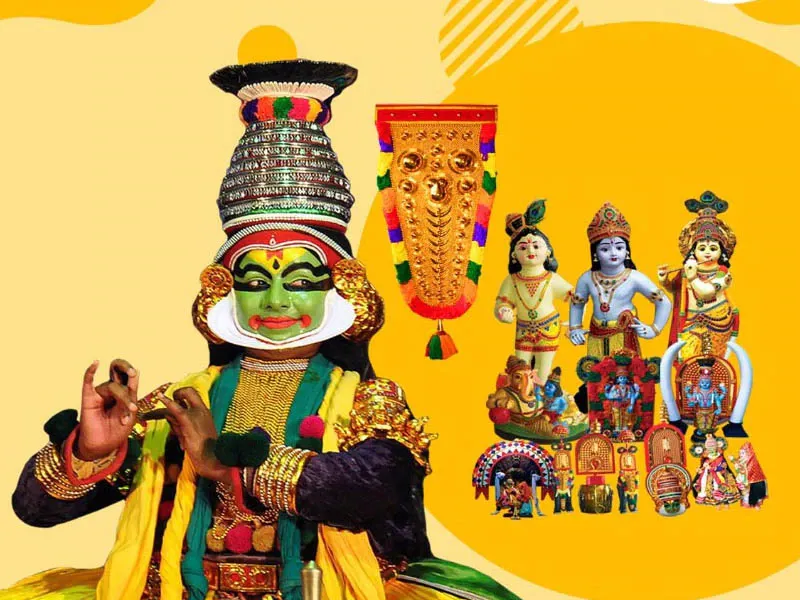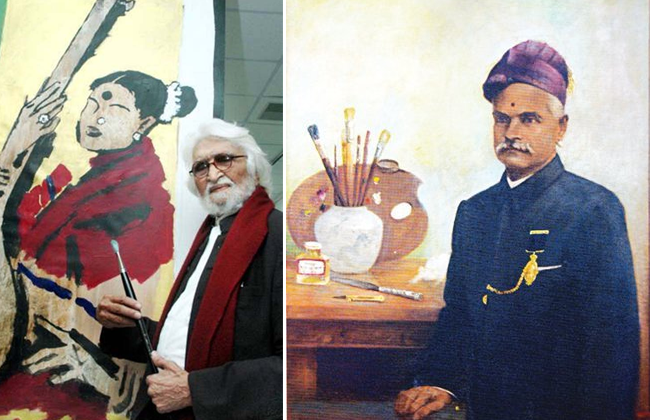Indian Art and Architecture: India, a land steeped in history and culture, is home to some of the world’s finest examples of art and architecture. The subcontinent’s rich heritage is reflected in its myriad artistic expressions and architectural marvels, each telling a story of ancient traditions, spiritual beliefs and socio-political influences. From the grandeur of ancient temples to the exquisite artistry of Mughal monuments, Indian art and architecture continue to inspire and fascinate.
Ancient Indian Art: A Glimpse into the Past
Indian art has its roots in prehistoric times, as seen in the Bhimbetka cave paintings, which date back to 30,000 BC. These paintings, depicting scenes of daily life and hunting, highlight the artistic sensibilities of early humans.
Art forms developed significantly during the Indus Valley Civilization (2600–1900 BCE), with intricate seals, sculptures, and pottery displaying advanced craftsmanship. The iconic bronze statue of the Dancing Girl and the bust of the bearded priest reflect a keen sense of detail and proportion.
The Vedic and post-Vedic periods saw the rise of religious art, including sculpture and carved carvings on temples, stupas, and monasteries. This era also marked the beginning of storytelling through art, with intricate panels depicting episodes from epics such as the Mahabharata and the Ramayana.
Indian Architecture: A Journey Through Eras

Temple Architecture
Indian temple architecture is a fascinating testament to the spiritual elation of the country. It can be broadly divided into three styles:
Nagara Style (North India): Characterized by curved towers or spires, examples include the Khajuraho Group of Monuments in Madhya Pradesh and the Sun Temple in Konark, Odisha.
Dravidian Style (South India): Recognized by its towering gopurams and intricate carvings, this style is exemplified by the Brihadeeswara Temple in Tamil Nadu and the Meenakshi Temple in Madurai.
Vesa Style (Deccan region): A blend of Nagara and Dravidian styles, seen in the temples of Pattadakal and Aihole in Karnataka.
Buddhist and Jain Architecture
The spread of Buddhism and Jainism led to the introduction of new forms of architecture, such as stupas, viharas, and chaityas. The Great Stupa of Sanchi and the Ajanta and Ellora caves are outstanding examples of Buddhist art and architecture. Similarly, the Jain temples of Mount Abu and Shravanbelagola display unparalleled artistry in marble and stone.
Mughal architecture
The Mughal period (16th–18th centuries) brought about a fusion of Persian, Central Asian, and Indian styles, resulting in iconic monuments such as the Taj Mahal in Agra, Humayun’s Tomb in Delhi, and the Red Fort. These structures are renowned for their symmetry, elaborate ornamentation, and use of materials such as marble and sandstone.
Colonial influence
The arrival of European powers ushered in the colonial architectural style, blending classical Western aesthetics with Indian elements. Buildings such as the Victoria Memorial in Kolkata and the Gateway of India in Mumbai are enduring examples of this synthesis.
Indian Art Forms: A Cultural Kaleidoscope
Painting
Indian painting developed through frescoes, miniatures, and folk art. The Ajanta Cave Murals are early masterpieces of religious art, while Mughal miniature paintings depict court life with exquisite detail. Folk traditions such as Madhubani, Warli, and Pattachitra celebrate local themes and vibrant colors.
Sculpture
Indian sculpture ranges from intricate depictions of gods and goddesses in temples to monumental stone statues at Mahabalipuram and Elephanta. These sculptures often embody deep spiritual significance, blending aesthetics with devotion.
Crafts
India’s rich tradition of handicrafts includes textiles, pottery, jewelry, and woodwork. From Banarasi silk sarees to Rajasthani blue pottery, these crafts reflect regional diversity and skilled craftsmanship passed down through generations.
Legacy and Influence of Indian Art and Architecture:

Indian art and architecture have profoundly influenced aesthetics and design worldwide. The principles of Vastu Shastra have inspired modern architectural practices, while yoga and meditation spaces around the world borrow elements from Indian temple designs.
Tourism thrives on India’s artistic and architectural heritage, attracting millions of visitors annually. Places like Jaipur’s Amer Fort, Delhi’s Qutub Minar, and Kerala’s backwater temples offer a glimpse into the country’s rich cultural past.
Indian art and architecture are living expressions of the country’s history, diversity, and spirituality. They are not just relics of the past, but vibrant aspects of contemporary Indian identity. Preserving and celebrating this tradition is vital for future generations to experience the talent of ancient and medieval craftsmen, who left an indelible mark on humanity.
Read Also: The Influence of Indian Art on Global Culture
![]()





